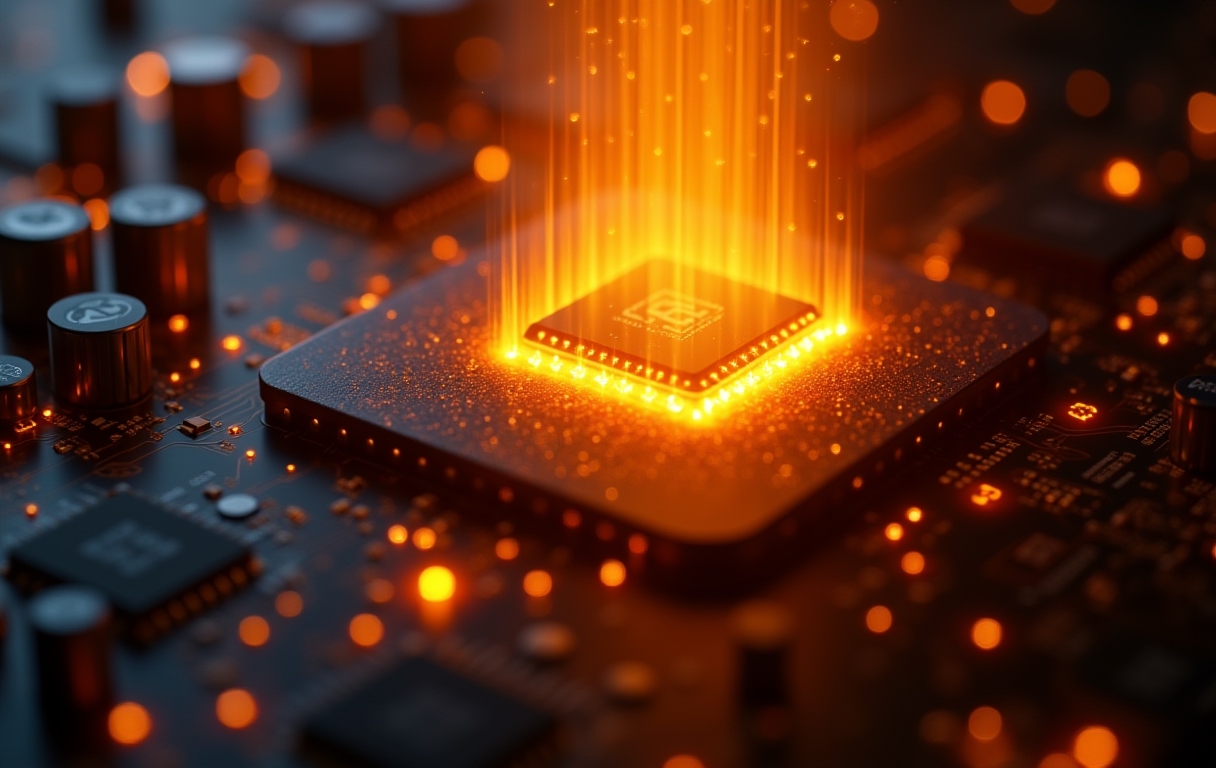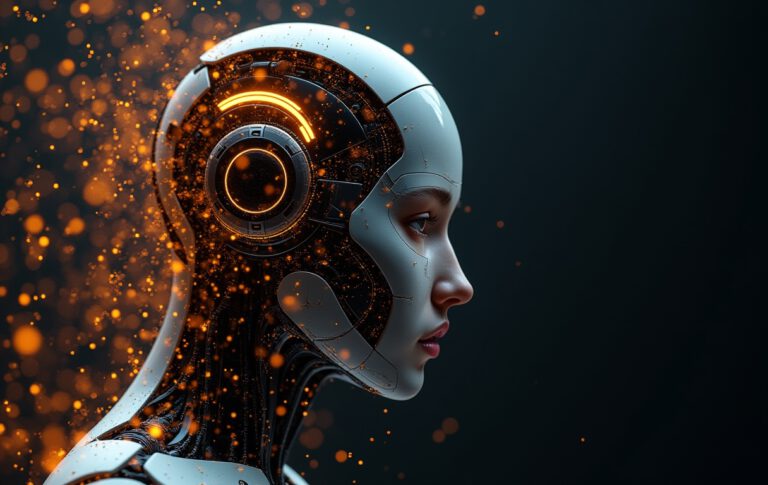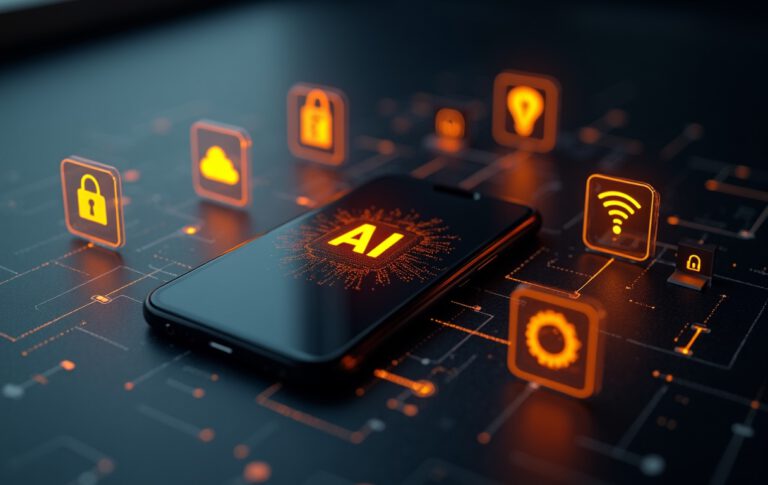🕔: 8 min – Technical: ✔✔
As described in the previous articles, there are almost no limits to the use of artificial intelligence. Accordingly, it would be presumptuous and impossible to list all the application examples in just one article. At this point, we will only describe possible applications and encourage you to adapt them to your individual needs.
Artificial intelligence has already been applied to many other fields, and the results of seemingly simple tests have been impressive.
For example, an AI was given the task of distinguishing between photos of wolves and dogs without any direct instructions. After the learning phase, a test was conducted. When a husky puppy was recognized as a wolf, the error was analyzed and it was found that the AI had not analyzed the animals, but the environment. On the one hand, this was laughed at, but on the other hand, it quickly became clear that an AI does not make decisions like a human, but sets priorities from a huge amount of data that are not logical or in some cases hardly comprehensible from a human perspective.
The use of artificial intelligence has become indispensable in medical technology. Some diseases used to be diagnosed based on certain markers in the blood count. When analyzed by an AI, it turned out that other values in the blood count had already changed before the previous marker was even detectable. This greatly improved early detection.
The question of “curse or blessing” is quickly answered when used correctly.
These findings must be applied to individual applications. Especially in complex processes or systems, it is hardly possible for an operator to observe, evaluate and adjust all processes at the same time. Adjustments are usually made in response to problems. It is hardly possible to optimize the entire process.
However, it is important to remember that machine learning is based on data that may not be available in some use cases. Accordingly, the focus is on collecting the necessary data before implementation. Since many systems in the concrete industry are customized solutions, a case-by-case analysis must be performed depending on the task.
It is therefore obvious that plants are not generally equipped with such functions, and if they are, they are only available as standard for individual processes.
Application Example 1: Administration
In contrast to the examples from manufacturing, the data to be processed in administration is much easier to obtain or is already available. ERP systems and the Internet already provide a sufficient pool of data for the use of AI in the short term.
Many tools are already available for procurement, marketing and sales. ERP systems also offer out-of-the-box solutions. At this point, we want to focus on a specific industry-related example.
Potential for improvement
Today, products usually have a fixed storage place. The primary goal is to ensure that all products in the yard can be reached, which is only possible if the size of the yard allows it. In addition to forklift traffic, routes for deliveries, pickups, and emergency and escape routes must be considered. The forklift driver can quickly become the most important link in the chain.
With the use of artificial intelligence, we would be able to achieve optimal use of space, material flow, and minimized distances through a yard that may be chaotic to humans.
Data required
– Inventory
– Areas and routes
– Order Backlog
– Production schedule
– Mobile devices with information and GPS (optional)
Artificial Intelligence
Products produced in stock can be placed based on historical information so high frequency products have shorter routes or are more accessible. If the frequency changes, the system would successively change storage locations without the need for relocation. Instead, newly produced goods would be sent to a future location at the appropriate time, and the current location would be gradually emptied, taking orders into account.
Order-related products that do not require a full storage location due to small volumes can be stored in a chaotic manner based on delivery time.
Conclusion
For some, using AI may not seem obvious because there is enough space available and continuous inventorying is not necessary. But when you consider that autonomous vehicles will play a greater role in the future and put these technologies together, the impact becomes clear.
Application Example 2: Optimizing energy efficiency and reducing wear
5 V-belt conveyors are used after a concrete block machine.
These conveyors usually run continuously as soon as they are in automatic mode. Often it is irrelevant whether a board is discharged. The speed is usually set to the maximum allowed speed for that product.
Potential for improvement
2 factors could be improved with little effort. The first is an improvement in energy consumption and the second is a reduction in wear due to reduced use.
The conveyors should only start up when needed and at a minimum speed which is sufficient to avoid a jam.
Required data (without constants)
– Product ID
– Speed-dependent transport times (material flow)
– Waiting times
– Start-up times
– Power consumption of drives (optional)
Control with AI
Depending on the start-up speed and information about whether a demand (board discharge) is imminent, only the conveyors necessary to avoid a jam are started. It may also make sense to run the conveyors at a minimum speed instead of shutting them down completely. If there is a jam, the belts are run at the maximum speed allowed for the product to remove the jam. Speed reductions at transitions are also possible.
Conclusion
It quickly becomes clear that it would be unreasonable to expect an operator to constantly be adjusting speeds or deciding which conveyor needs to run. Even a weak AI would be a good start, but would not be able to act in such a complex way. Of course, this example can be applied to other similarly structured system components.
Application Example 3: Preventive Maintenance
Of course, it is possible and advisable to maintain machines at regular intervals. On the other hand, maintenance intervals always depend on usage. It would be disastrous to base the service intervals of a car solely on the distance it is driven. If you compare a car that is driven on a race track with a car that is only used in the city, the differences will be obvious.
Artificial intelligence can be used to avoid downtime, optimize parts inventory, and optimize costs.
Potential for improvement
Bearings in a plant component must be replaced after a certain time. Of course, wear is usually dependent on use and load. The timing should be planned in advance and the parts ordered just in time.
Required data (without constants)
– Product ID
– Speed of the drives (parameterization)
– Number of cycles
– Condition of bearings at time of replacement or at time of failure
– Lead time of spare parts
– Power consumption of drives (optional)
– Production plan (optional)
Artificial Intelligence
Since this is a process that takes a long time to gather enough data, it makes sense to collect all the data, but first simplify the algorithm to get started. This is done by creating a calculated index as an approximation (example conveyor: speed x weight x cycles). This index, combined with the condition of the bearing at the time of replacement, makes it easy to determine the current condition and replace the bearing accordingly. By recording power consumption and product weight, irregularities can be detected.
Conclusion
The determination of maintenance intervals for machines in the concrete industry is usually based on empirical values and rarely includes information about the degree of utilization. What is already standard practice in the automotive industry will find its way into other industries in the future.
Application example 4: Self-learning machine
This is certainly the ultimate discipline in any process, especially in an industry with a relatively large number of variables (e.g. minor fluctuations in raw materials).
Potential for improvement
The task here would be to independently create and optimize the parameterization of the system based on specified product properties.
Required data (without constants)
– Product ID
– Raw materials including the condition of the raw materials
– All temperatures
– Mixer parameterization
– Technical condition (ie. Mixing paddles)
– Machine parameterization
– Technical condition (e.g. rubber buffers)
– Determination of wet product quality
– Cure process and related data
– Determination of product quality in the cured state
– …
It quickly becomes clear that this fiction, while theoretically possible, requires an enormous amount of information not currently available. Since this example would take up several pages, we will shorten it here.
It is doubtful whether there is any reasonable relationship between effort and outcome.
Nevertheless, there are already systems that can provide a lot of information, especially when it comes to quality recording. In conjunction with system parameters, these can serve as a basis for the future.
For all use cases, of course, all data recordings must be provided with date and time and the information linked to the product ID (e.g. weight, …) must be stored. For cumulative data, individual recording and evaluation via the database is recommended.
If you have any questions or are interested, please contact us.




